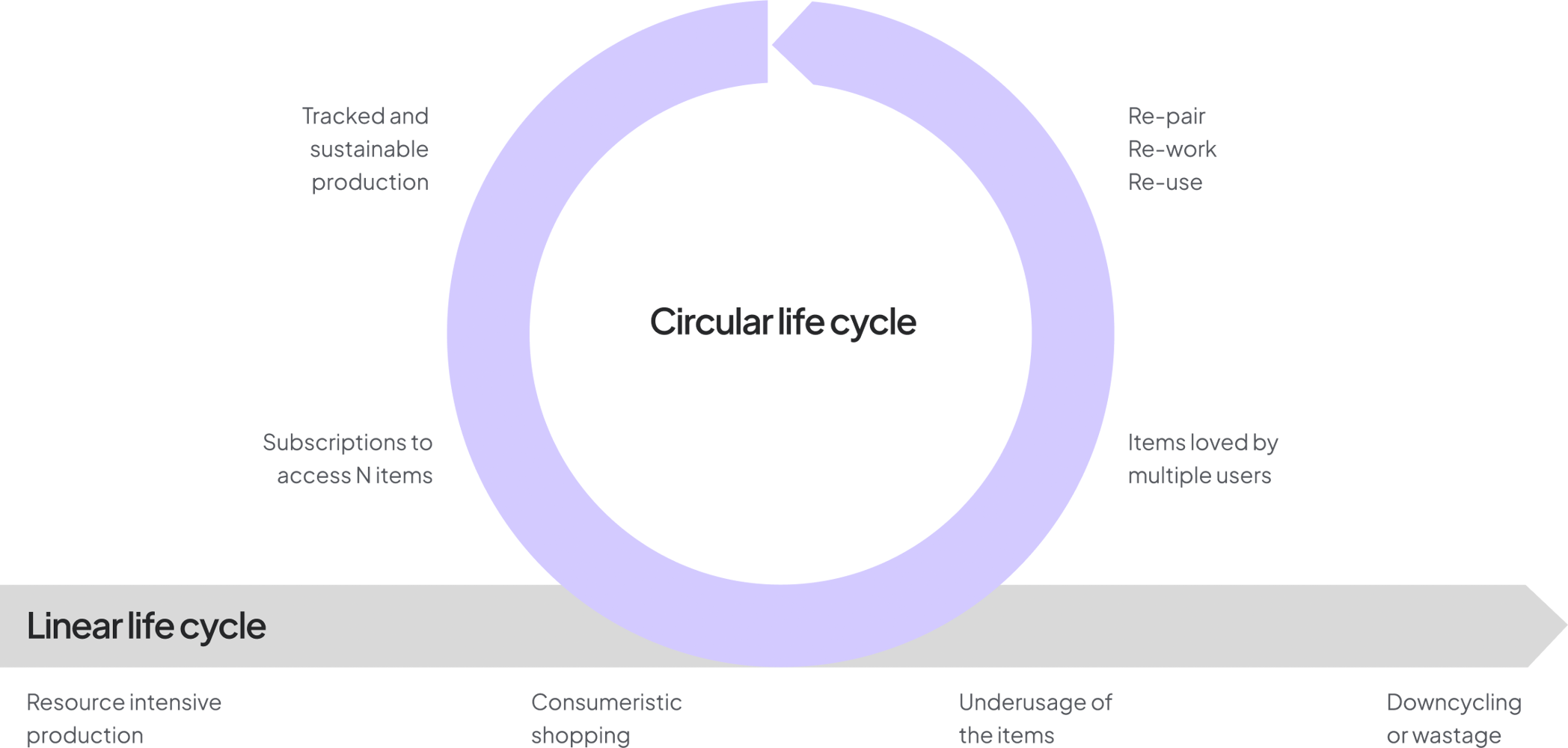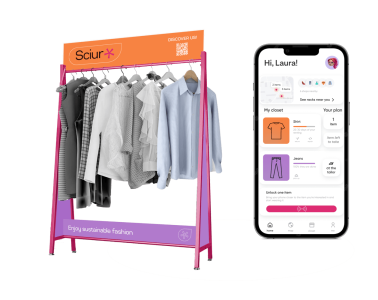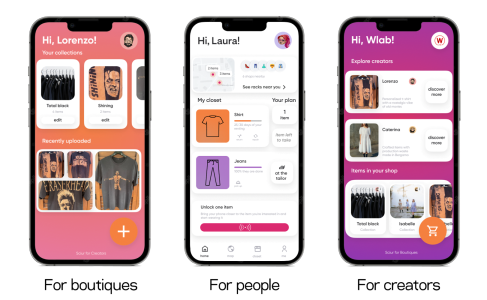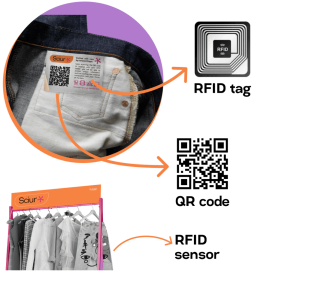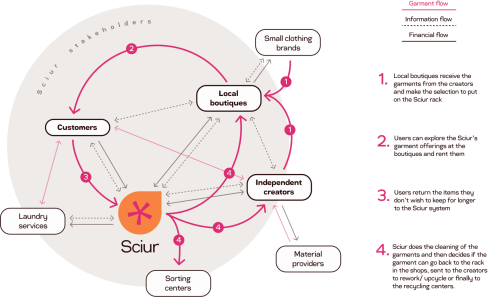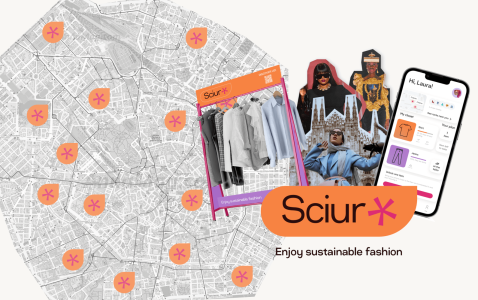2023 @Service Design Challenge – Finalist project
Sciur*
#service design
#project management
What did I do?
Structuring and running the user research and insight extraction
Keeping the red thread evident through all the phases
////////////////////////////////////////////////////////////////////////////////////////////////////////////////////////////////////////////////////////////////////////////////////////////////////////////////////////////////////////////////////////////////////////////////////////////////////////////////////////////////////////////////////////////////////////////////////////////////////////////////////////////////////////////////////
Small boutiques have no time to follow the whole life cycle of sold items but are rich in spatial and relational resources
Milan’s fashion industry, besides major labels, includes small boutiques that select independent brands or produce their own collections. Although these stores have trouble attracting younger consumers and are unable to handle product repair or end-of-life issues, they forge strong bonds with customers, a potential entry point to change consumption habits towards sustainability.
- 5 local boutique owners interviewed
- 2 independent fashion designers interviewed
- 19 case studies mapped
Users want to be sustainable but keep exploring their identity buying new clothes
The UX research revealed a discrepancy between users’ intentions and behaviours, with 56% of interviewees well aware of the environmental crisis and reducing clothing consumption, but most expressing a need to explore identity through new items and styles. Additionally, industry reports highlighted that despite 20% to 50% of wardrobe items never being worn, individual clothing purchases increased by 60% between 2000-2014.
- 16 users engaged in cultural probes
- 10 users interviewed
- desk research to frame the fashion system issues
Sometimes I end up buying impulsively items I don’t like so much, so I force myself to wear them to avoid wasting, but then I don’t feel comfortable with how I look.
Interviewee - 26y old, Milan
Sciur* leverages existing resources to provide a distributed closet service, enabling sustainable behaviours & allowing experimentation
A systemic approach can reshape consumeristic clothing habits while guaranteeing freedom in experimenting with individual style.
This concept uses QRs and RFID to track items hanging on smart clothing racks distributed in the city’s boutiques, allowing users to browse available items and subscribe to rental plans with a set number of items, defusing compulsive patterns. This system encourages items to be loved by multiple users, optimizes garments’ life-cycle, supports repairing and upcycling, and reduces environmental impact by transforming ownership in access.
- Circular Ecosystem Map
- User Journey Map
- App Prototype
- Service Blueprint
- Business Model Canvas
Long story short
Challenges
> Working remotely in different time zones: dividing tasks into sub-teams and asynchronous communication were key.
> Balancing the quality of the output with the effort and timing required: we learnt to choose the more efficient tools and methods.
> Constantly proving the value of our work: keeping the team aligned on the researched impact brought clarity to the output materials.
Organisations
Service Design Challenge 2022 by Philips Experience Design and Service Design College in partnership with IBM, Ikea, Ellen Macarthur Foundation
People
Amarinder Arora, Martina Bon, Marco Finardi, Aurora Serra, Riccardo Torta
Challenges
> Working remotely in different time zones: dividing tasks into sub-teams and asynchronous communication were key.
> Balancing the quality of the output with the effort and timing required: we learnt to choose the more efficient tools and methods.
> Constantly proving the value of our work: keeping the team aligned on the researched impact brought clarity to the output materials.
Organisations
Service Design Challenge 2022 by Philips Experience Design and Service Design College in partnership with IBM, Ikea, Ellen Macarthur Foundation
People
Amarinder Arora, Martina Bon, Marco Finardi, Aurora Serra, Riccardo Torta
